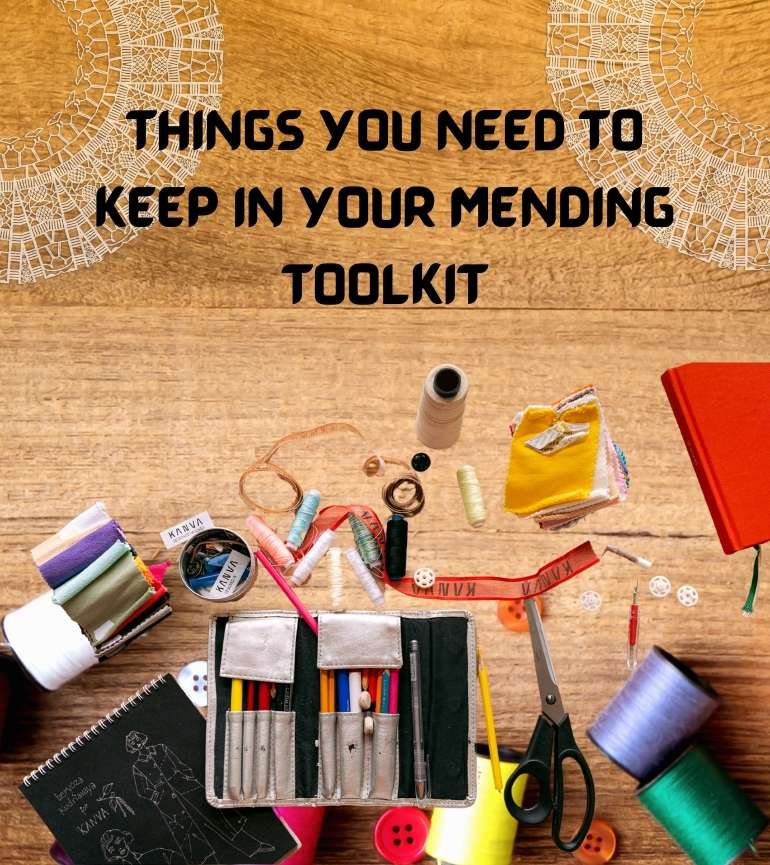Mending clothes is more than just a way to save money. It lets you give new life to worn-out favorites, customize your wardrobe, and reduce waste. Whether you’re reattaching buttons or patching holes, having everything you need in your mending toolkit is the first step to successful repairs. A well-stocked, tidy mending kit ensures you’re always prepared when a clothing crisis strikes.
There are plenty of sewing myths and misconceptions out there that might make you feel like mending your clothes just isn’t worth the trouble, but it doesn’t have to be intimidating. With a few essential tools and tips, you’ll gain the confidence to tackle minor repairs like a pro.
Pins, Needles, and Thread
No mending kit is complete without pins, needles, and threads. Needles come in different sizes and types, so having options ensures you’ll have the right one for any fabric, whether it’s denim or delicate silk. Pins hold fabrics together as you sew, making your work neater and less stressful. A small stash of thread in neutral colors (plus one or two shades that match your go-to garments) is also a must.
Fabric Scissors and Seam Rippers
When it comes to fabric, grabbing just any old pair of scissors won’t cut it—literally. Fabric scissors are sharp and designed to give clean, straight cuts without fraying fabric and thread. And when mistakes happen (hey, they’re part of the process), a seam ripper is your best ally. It helps you quickly undo stitches without damaging the fabric.
Patch Material and Fusible Webbing
Have you ever repaired a hole only to have it open up again in a week? Adding a patch is a simple way to reinforce the area and make clothes look as good as new. Keep some matching or contrasting patch scraps in your kit. Fusible webbing is another lifesaver for no-sew moments. It uses heat to bond fabrics and is perfect for quick fixes.
Measuring Tools and Marking Pens
Precision matters, even in DIY repairs. A measuring tape ensures hems and seams are even, while fabric marking pens allow you to jot down guidelines on your work. They’ll disappear after washing or ironing, meaning you don’t have to worry about mistakes showing up later. These tools make tricky projects easier to pull off.
All that said, repairing clothes isn’t just about stitching them back together. Knowing how to wash and clean unique clothes, including those you’ve repaired or tailored yourself, can help you ensure your work lasts. A little care goes a long way when it comes to keeping your efforts looking good over time.
Wrapping it Up
Your mending toolkit doesn’t have to be overwhelming. Stick with the basics, and you’re set for most minor repairs. By being prepared and having everything you need in your mending toolkit ready, you’ll tackle rips, holes, and frays with ease. Soon enough, you’ll be looking at torn jeans or loose buttons as small, satisfying challenges instead of problems. Mending might even become your newest favorite hobby!
What’s your favorite mending tool? Let us know in the comments!




